

With over 500 million followers worldwide, Buddhism is one of the World’s major religions. Buddhism includes a range of different beliefs and practices, but all variations share a few things in common.

Buddhism is a faith that started in India over 2,500 years ago.
It’s the fourth-largest religion in the world, with over 520 million followers. These followers are known as Buddhists, and they are primarily located in Asian countries such as China, although the faith is practiced all over the world.
Buddhism consists of a very wide variety of different spiritual practices, traditions, and beliefs. Because of this, there is a wide range of different types of Buddhism. The three main branches are Mahayana, Theravada, and Vajrayana.
All of these different strands of Buddhism are based on teachings attributed to a man named Siddhārtha Gautama, who, after achieving spiritual enlightenment, became known as the Buddha, which means the ‘awakened’ or ‘enlightened one’.
At the heart of the Buddha’s teachings is the goal of overcoming the suffering of life by being selfless and understanding the world in its true nature. Today, the story of Buddha and his teachings continues to inspire millions of people around the world.

The Buddha (which translates to ‘Awakened One’), was a spiritual leader who lived in India and Nepal around the 5th-4th centuries B.C.E. It is said that he was born into a life of luxury but abandoned his family and inheritance in search of enlightenment. The Buddha encouraged meditation and acting with kindness as ways to overcome suffering.
To learn more specifically about the Buddha, head over to this Teaching Wiki page.

The teachings of Buddhism, which are regarded as the direct words of the Buddha, and the basis for the teaching of Buddhist monks can be found in a select few Buddhist holy books. Together, these Buddhist holy books are known as the Tripitaka. For people who follow Buddhism, the holy books, or sacred texts, are the most important source of authority in terms of the teachings and rules that they follow. In each of the Buddhist holy books, there is a wealth of information on how to reach the stage of enlightenment and guidance for Buddhists on how to navigate their day-to-day lives.
The Pāli Canon is the name given to the collection of scriptures in the Theravada Buddhist tradition, which is the oldest Buddhist teaching school. There are three main categories of the Pāli Canon called pikata, which means ‘basket’. The reason for this name is that the palm-leaf manuscripts of these sacred texts were kept in basket-like containers. As there are three baskets, the canon of Buddhist holy books is commonly known as the Tripitaka, meaning ‘three baskets’.
The three baskets in the Tripitaka are:
While these are the main Buddhist holy books, some Buddhists from Tibet, China, Mongolia, and Nepal also read the Mahayana sutras. The Mahayana sutras are scriptures that were written in the Sanskrit language centuries after the time of Buddha. Notably, the Mahayana sutras tend to be longer than the earlier Buddhist scriptures and contain a range of colorful imagery and stories, in addition to teachings on Buddhist philosophy
Mahayana Buddhists believe that these texts contain the genuine teachings of the Buddha and, therefore, include them in the Tripitaka. This means that Theravada Buddhists and Mahayana Buddhists have different views on what scriptures belong in the Tripitaka.

At the heart of all Buddhist teaching are the Four Noble Truths. Buddhists believe that these are things we all must accept if we are to attain enlightenment. Briefly, the Four Noble Truths are as follows:
Suffering, as defined by the Buddha, is a never-ending cycle that’s continued by the cycle of death and rebirth. It can only be ended by achieving enlightenment or nirvana.
Buddhists believe that the only way to end the endless cycle of suffering is through achieving nirvana, also known as enlightenment. Therefore, it is the aim of all Buddhists to achieve nirvana.
In order to do this, Buddhism states that you must rid yourself of all ego, thus freeing yourself from the mundanity of life. If Buddhists are able to do this, they believe that they will be able to break free from the endless cycle of birth and rebirth and achieve nirvana. This is the goal of the majority of Buddhist traditions.
In Buddhism, life is frequently compared to a fire. The fire of human existence consists of illusion, passions, cravings, and other human emotions, all of which must be extinguished in order to achieve nirvana. The Buddha, who is known as the Enlightened One, is the one who is no longer inflamed; all of the Buddha’s fires have been extinguished. There are many phrases in Buddhism that are used to describe the state of the enlightened human being, such as the harbor of refuge, the place of bliss, the cool cave, and the farther shore. Of course, the most famous phrase used to describe this state of enlightenment is ‘nirvana’. In the context of Buddhism, nirvana is used to describe the process of the fires of things like lust, anger, passions, cravings, anger, and delusion dying out. However, nirvana does not describe complete extinction, as the desire to not exist at all was rejected profusely by the Buddha. For this reason, Buddhists aim for salvation, instead of just desiring to escape human existence.
There is speculation in Buddhism as to what happens to those after they have achieved nirvana. There is evidence in some early texts of the Buddha refusing to answer questions regarding this and the matter of whether or not saints would continue to exist after death. The Buddha stated that the reason for his refusal to answer these questions was that they were not relevant to the practice of the path. He believed that these questions could not possibly be answered within the realm of human existence. The Buddha even declared that any attempt at discussing the nature of nirvana or enlightenment would be certain to warp and misrepresent it. The Buddha also went on to state that it is possible to achieve and experience nirvana within the realm of human existence. The only way to do this, the Buddha declared, was by knowing the Buddhist truth, and actively practicing the Buddhist path.
The five precepts of Buddhism are like a code of conduct or a list of moral rules that Buddhists must live by to achieve enlightenment. They form part of the Noble Eightfold Path.
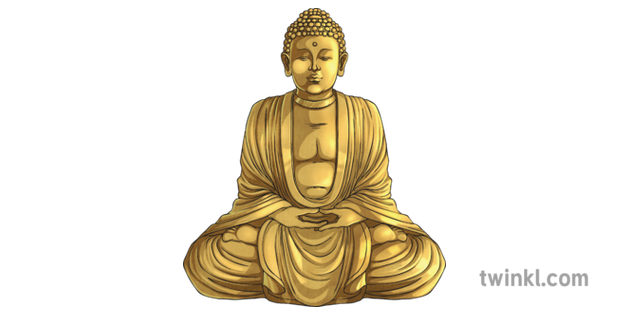
The five precepts of Buddhism are not always easy to carry out, so it is expected that they are practiced over time. These 'rules' help Buddhists rid suffering in the world.
The Noble Eightfold Path is the Buddha’s guide to ending suffering. It’s often represented as a wheel with eight spokes. As the name suggests, it consists of eight practices, which are outlined below:
Buddhist temples are incredibly sacred places to Buddhists and have a variety of functions. They also come in a range of different forms, which we will explore below:
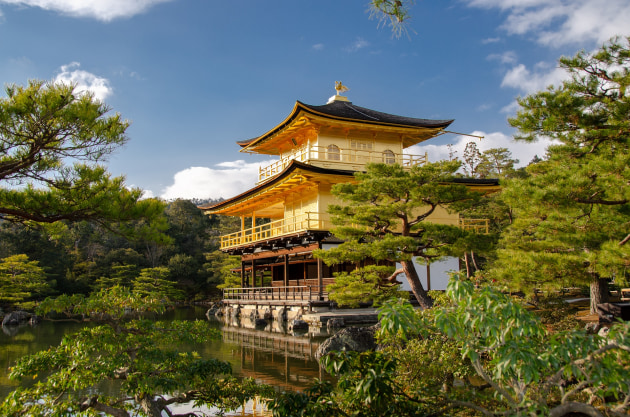

Buddhist temples are designed to inspire inner and outer peace and are sacred places to worship with others from the community. They’re also used as places of study and for Buddhist festival celebrations.
Inside the temples, Buddhist worship by chanting the Three Refuges (I take refuge in the Buddha, I take refuge in the Sangha- otherwise known as community, I take refuge in the dhamma, otherwise known as the teaching). Buddhists also chant the five Precepts and read from the Tripitaka, the Buddhist holy book. Buddhists also give offerings to images of the Buddha. They also light candles, burn incense, meditate, and listen to sermons being read.
On the day of a full moon, it’s important for Buddhists to visit a vihara, or temple so that they can worship. It’s worth noting that full moon days are sacred to Buddhists because it is believed that the Buddha was born, enlightened, and died on the days of a full moon.
Buddhist places of worship contain what is known as the shrine room, which is seen as the most important part of a Buddhist temple. They contain multiple Buddharupas, which are statues of the Buddha.
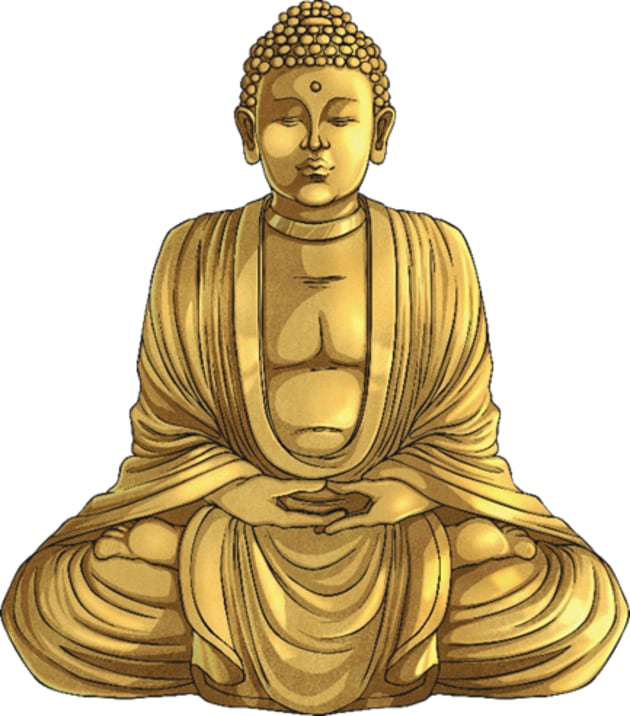
Offerings are made to the Buddharupas, including bowls of water or food, which are placed on an altar.
Anyone who enters the shrine must remove their shoes to signify respect and to keep the room clean. It is tradition to dress modestly and sit with their feet tucked underneath their legs, as it is seen as rude to face one’s feet towards someone, especially the Buddha.

There are eight symbols in Buddhism, each holding a specific meaning and representation for those of the faith. Each symbol represents a quality of enlightenment or nirvana. These eight symbols of Buddhism were originally used in India at the coronation ceremonies of new Kings. Each symbol can be found in a variety of places such as ceramics, carpets, metalwork, and even furniture. Here, we will answer the question ‘what are the symbols of Buddhism?’, by going through each one in detail:

The lotus flower in Buddhism has lots of different meanings. It represents the purity and peace of speech, body, and mind. It's a symbol of fortune.
By growing in muddy water, it represents the rising and enlightening above the darkness, untainted by the mud below. All humans are born into the mud, or into suffering and the temptation of evil. And by banishing this evil, we are able to rise above it, like the lotus flower.
In Buddhism, it's believed that every time the Buddha stepped as a baby, a lotus flower would appear. For this reason, it's a very important symbol and is why it's commonly depicted in Buddhist imagery. Often, it is held by the Buddha himself or shows him sitting cross-legged on the flower.
Depending on the color of the lotus flower in Buddhism depends on its meaning.
Whether or not a lotus is closed or open and its growth also represents the different stages of enlightenment. If a lotus is closed, then it represents the time before the Buddhist follower found Buddha or enlightenment. Whereas a lotus flower in full bloom and open represents full enlightenment and self-awareness.
The lotus is seen as the Sacred Flower of India. It appears in lots of ancient scriptures, mythology, and art as a symbol of serenity.

Learn more about Mythology with this Teaching Wiki Page.
Samsara represents the Buddhist perspective of the life cycle as Buddhists see it: life, death, and rebirth. Buddhists believe that if they live their current life in accordance with Buddhist beliefs and expectations, then they will have good karma for their next life. This means that a Buddhist hopes or even expects to be born into a more desirable realm in their next life if they feel that their current life was lived properly. A key aspect of Samsara in Buddhism is that the cycle is without beginning or end, so Buddhists believe that life has always, and will continue to, move in the cycle of Samsara.
In English, Samsara translates to "cycle of existence" and "endless rebirth".
Buddhist realms can be understood as categories in which an individual is reborn into. As we now know, Buddhists believe that each soul in existence is reborn into a new form after dying in its current one. These different forms can be split into six separate categories. We have listed them below, in order of most desirable, to least:
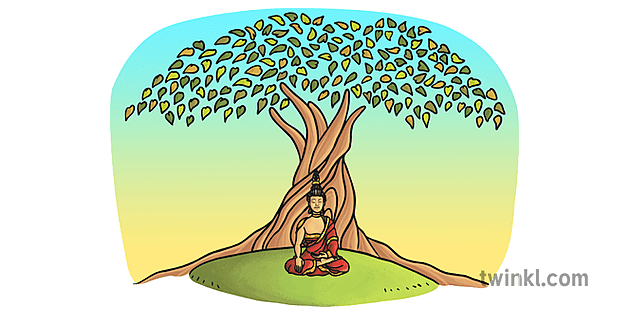
Begun 2,500 years ago, Buddhism is one of the oldest religions in the world. By learning about how Buddhism is, children can gain a better understanding of its contemporary context, traditions, and followers.
By engaging with the history and sheer age of Buddhist teachings, children can better understand their significance today. Children can see how these were conceived thousands of years ago, in a totally different time. This could inspire them to consider what the future of Buddhism holds. How has Buddhism evolved since back then? What has stayed the same, and what has changed?
Children could do an independent writing task, entitled 'How old is Buddhism'. They could then go to your school library or use the Internet to find out key facts surrounding Buddhist history and how it formed as a religion. As a piece of historical research, this could expose children to a variety of non-fiction resources and invite them to think critically about these sources too. What historical information seems accurate? Has anything been said that seems biased?
You could also combine this with the geographical context of Buddhism, when and where did it begin? Children could combine dates and maps for a homework project on how old Buddhism is.
Here are some other teaching Wiki pages on some of the world's oldest religions, including Zoroastrianism , Hinduism , Jainism, and Judaism.
Buddhism started with a man called Siddhārtha Gautama, who would later become the Buddha. He was born in Nepal around the 5th century BCE to a wealthy nobleman. He had everything he needed and was kept away from the harsh realities of life.
One day, Siddhartha left his palace and saw an old man, and he realized that this was the inevitable fate of human beings. After this, Siddhartha decided that he should give up his wealthy life and live as a homeless holy man.
Over a long period of time, Siddhartha meditated beneath the Bodhi tree ("tree of awakening"). He was determined not to be distracted by anything, and he entered a deep state of concentration. After triumphing over his inner demons, Siddhartha reached enlightenment and became the Buddha.
The Buddha decided that he would teach others about his wisdom and understanding of the world. It is said that immediately following his first public speech, all who were present also gained enlightenment. The attendees of this speech were the first Buddhist monks, and the speech itself is considered to be when Buddhism started.
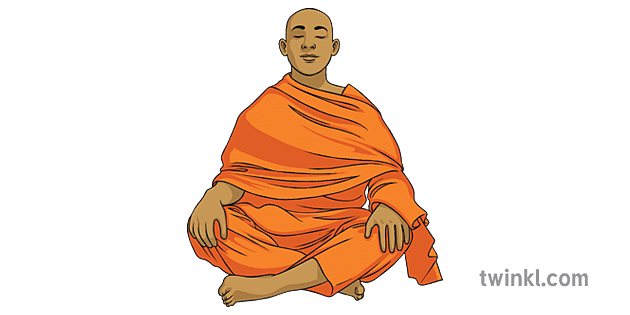
Buddhism wasn't founded as such, but it evolved naturally from the Buddha's teachings, kind of like other major religions. To complicate things further, there are a few different types or "sects" of Buddhism that started at different times.
In general, we can say with certainty that Buddhism started sometime after the Buddha died in the 4th century B.C.E. Followers of the Buddha were initially responsible for starting the schools of Buddhism, and a famous king called Ashoka helped to spread the Buddha's teachings throughout India and Asia.
Interestingly, Buddhism nearly went extinct in India in the 12th century. This followed the rise of Hinduism and Islam. Today, the religion has managed to hold on and India is an important destination for many Buddhists, who visit the country on pilgrimage.
New schools of Buddhism continue to be founded by people who interpret the Buddha's teachings in different ways. For example, a lot of Western schools of Buddhism were founded in the mid to late-20th century. This movement established Buddhism in all parts of the world. Although Buddhism isn't as popular as other religions in the West, its practices of mindfulness and meditation are increasingly popular among people that don't consider themselves to be religious.
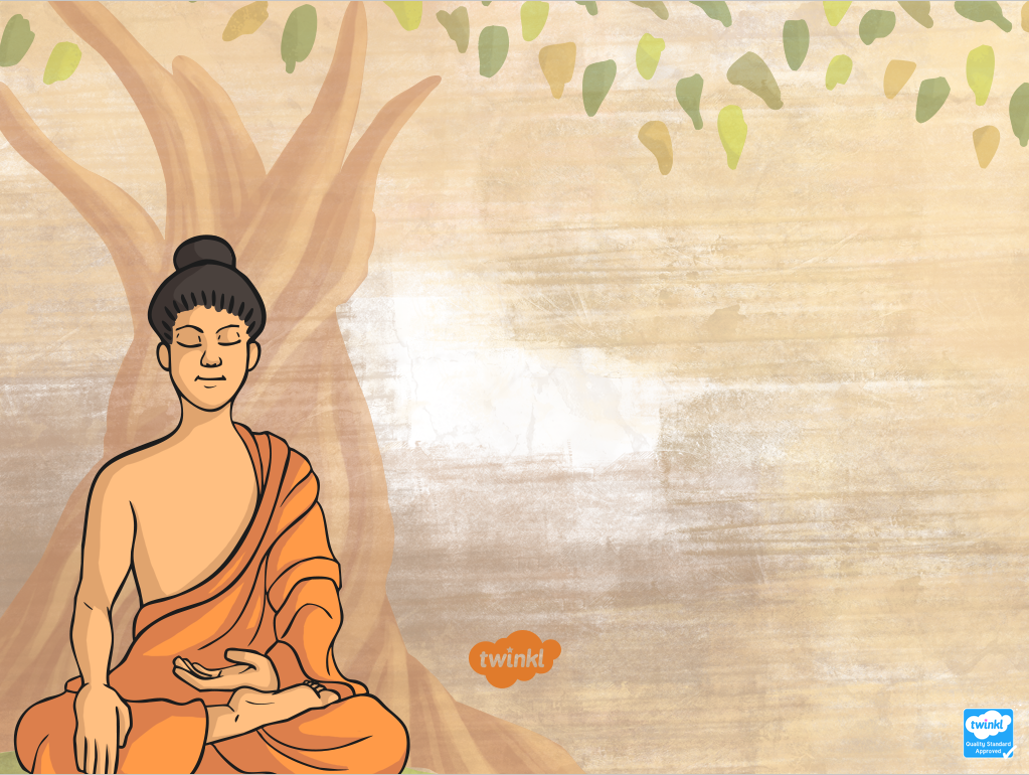
As Buddhism spread across the world and was adopted by different languages, cultures, and communities, it slowly but surely split into different forms.
These branches (or schools) of Buddhism have different interpretations of the teachings of Siddhārtha Gautama, the original Buddha. Although each of the different branches of Buddhism agrees on the idea of reaching Nirvana, they believe in different methods of getting there.
The main branches of Buddhism are:
To remember when Buddhism started, the beginning of the Buddha’s teachings is celebrated on the first full moon of the eighth lunar month. This occasion is known as Asala-Dharma Day, which is celebrated in the Theravada Buddhist tradition of Southeast Asia.
Dharma means doing the right thing in speech, thoughts, action, and right mindfulness.
On Asala-Dharma Day, many Buddhists go to their local temple and give thanks for the teachings of Buddha. They may light candles, burn incense, reflect on the Buddha’s teachings, or perhaps a combination of all three.
Ceremonies are meant to provide a blessing in Buddhism. Practitioners can engage in devotional practices, such as commitment to religious observances or objects. They may also ask for blessings from a Buddha or other enlightened being. Monks and nuns are believed to be capable of conveying spiritual power by blessings too, through chanting and other means.
The following quotes can function as Buddhist blessings for children:
If you enjoyed these 10 facts about Buddhism and want more information on when Buddhism started, you might want to try watching this informative video: